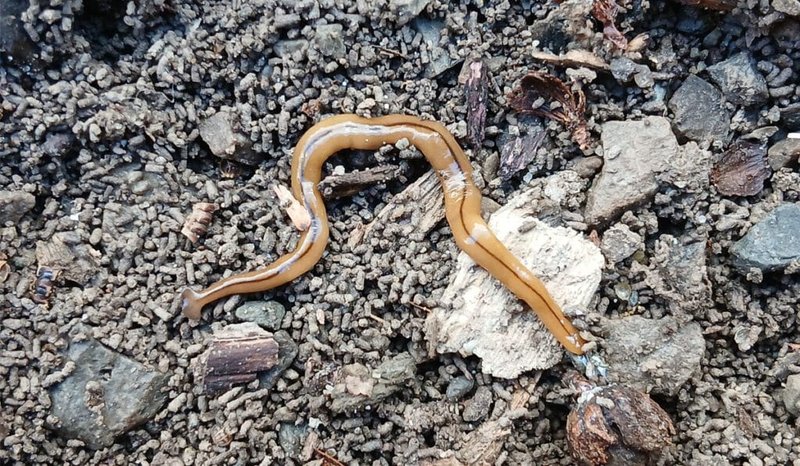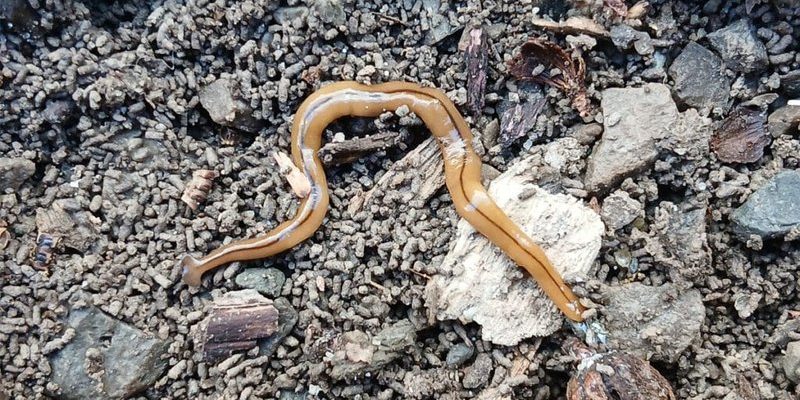
You might be wondering what exactly a hammerhead worm is. Picture a worm that has a flat, spade-like head, resembling a hammerhead shark—hence the name. They’re primarily known for their vibrant colors and unique shape, but don’t let their looks fool you. These worms have the potential to cause significant harm, especially to your precious plants. Let’s dig deeper into understanding these worms and assess the risks they pose in a greenhouse setting.
What Are Hammerhead Worms?
Hammerhead worms, or *Bipalium spp.*, are a family of planarian flatworms. Native to tropical regions, they’ve been spreading across various parts of the world, including the United States. You might come across them in your garden or greenhouse, hiding under damp leaves or in the soil.
These worms can grow quite large, often reaching lengths of up to 12 inches! Think of them as the “predators” of the soil. They primarily feed on earthworms, which are vital for a healthy garden. Hammerhead worms use a specialized secretion to digest their prey externally, allowing them to feast on nutrients without much effort. The circle of life is fascinating, isn’t it? But here’s the twist: if you want a thriving garden, hammerhead worms are not exactly welcome guests.
Identifying Hammerhead Worms
So, how can you spot a hammerhead worm in your greenhouse? Look for these distinct features:
- Flat, elongated body: They have a slick, smooth texture and can be various colors, including brown, gray, and even bright shades of orange or blue.
- Unique head shape: The most recognizable feature is their hammerhead-like shape. It’s wide at the front and tapers toward the tail, making them quite easy to identify compared to regular earthworms.
- Movement: You’ll often see them moving in an undulating manner, which is quite different from the typical crawling motion of other worms.
Being able to identify these worms is crucial! The sooner you spot them, the sooner you can take action to protect your plants. So, keep an eye out next time you’re tending to your greenhouse. You never know what might be lurking beneath the surface!
Why Are Hammerhead Worms a Problem?
Honestly, hammerhead worms can wreak havoc in your greenhouse. Here’s the thing: they’re not just casual visitors; they’re predators. Their primary diet consists of earthworms, which play a critical role in maintaining soil health. By eliminating earthworms, hammerhead worms are jeopardizing the very ecosystem you rely on to grow healthy plants.
But that’s not the only issue. These worms can also carry pathogens that might be harmful to other beneficial insects in your greenhouse. Think about it—if your greenhouse is a little paradise for plants, these worms are like unwelcome party crashers, bringing chaos and destruction. You want your environment to be as healthy and balanced as possible, and hammerhead worms throw a wrench into that balance.
How Do Hammerhead Worms Enter Greenhouses?
Wondering how these little invaders make their way into your greenhouse? Several pathways contribute to their spread:
- Soil and Plants: If you buy soil or plants from a nursery or garden center, they might already have hammerhead worms hidden away, just waiting for the right opportunity to emerge.
- Compost: Adding compost to your greenhouse can introduce these worms, as they can sometimes hitch a ride with decomposed organic material.
- Garden Equipment: Old tools and gardening gear can also be carriers. If you’ve used them in areas known for hammerhead worms, they might find their way into your greenhouse.
Being vigilant about where you source your soil, plants, and equipment can help minimize the risk of hammerhead worms invading your space. Prevention is much easier than combating an infestation later!
Assessing the Risks of Hammerhead Worms
Now that you know what hammerhead worms are and how they get into your greenhouse, let’s talk about risk assessment. Every greenhouse gardener should consider the following factors:
1. **Soil Health**: The presence of hammerhead worms means fewer earthworms and a potential decline in soil quality.
2. **Plant Health**: With less soil health comes weaker plants, making them more susceptible to diseases and pests.
3. **Ecosystem Balance**: Introducing hammerhead worms can disrupt the overall balance of beneficial insects and organisms in your greenhouse.
Keeping an eye on these risk factors can help you maintain a healthy and productive greenhouse environment. You might even find yourself becoming a mini-expert on soil health as you work to ensure your plants thrive!
Strategies for Managing Hammerhead Worms
If you discover hammerhead worms in your greenhouse, don’t panic! Here are some effective strategies for managing them:
- Manual Removal: If you spot a hammerhead worm, the simplest method is to remove them by hand. Use gloves and place them in a sealed bag for disposal. Just be careful—never try to cut them, as they can regenerate!
- Soil Treatment: You could treat the soil with *Diatomaceous Earth*, a natural powder that can help eliminate these worms without harming beneficial species.
- Introduce Beneficial Organisms: Certain predatory insects can help keep the hammerhead worm population at bay. Introducing these beneficial organisms can create a natural balance in your greenhouse.
Managing hammerhead worms is all about being proactive rather than reactive. The more you understand and carefully monitor your greenhouse environment, the better you can protect it.
Final Thoughts on Hammerhead Worms in Greenhouses
In conclusion, hammerhead worms might not be the first thing you think about when you picture your greenhouse, but they’re worth paying attention to. Keeping these creatures out is essential for maintaining a healthy environment for your plants. By being proactive and knowing how to identify and manage these worms, you can ensure your greenhouse remains a thriving sanctuary for your plants.
Remember, every greenhouse has its challenges, and being prepared is half the battle. So, grab that coffee, get out there, and keep your green thumb busy—your plants will thank you for it!

